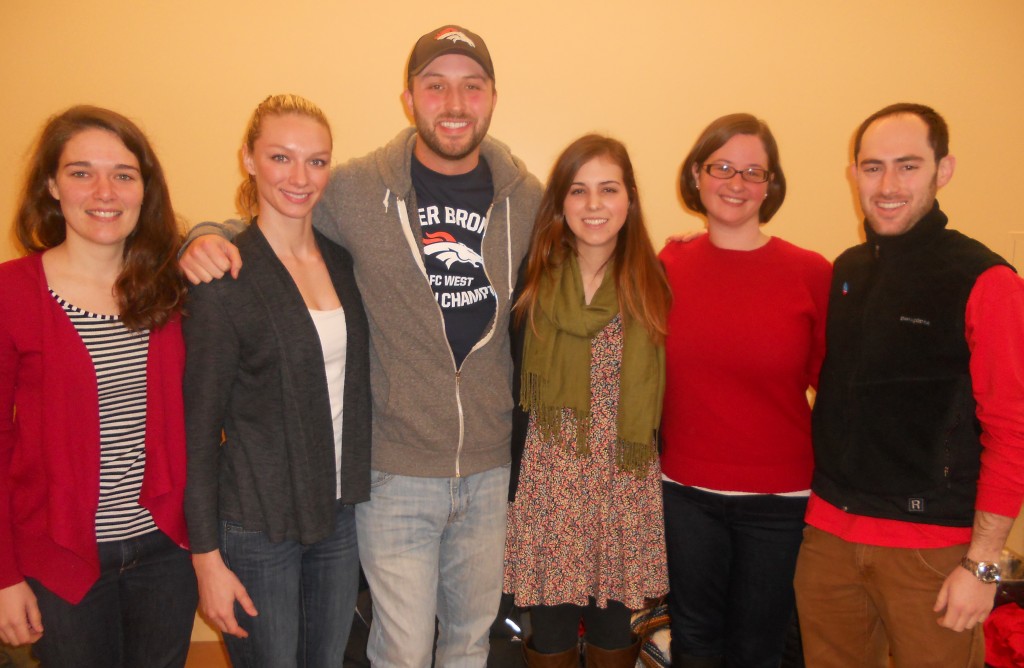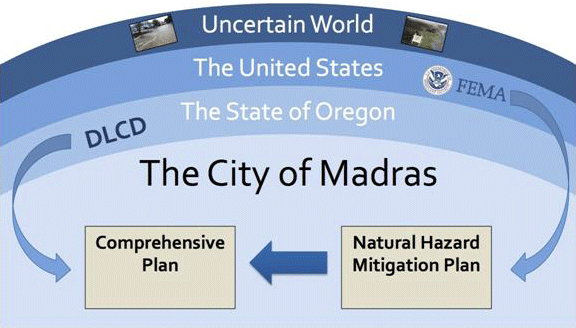 As our team wraps up the winter term, I think it’s a good time to reflect back on our progress on our Community Planning Workshop project. Before my team started our project of incorporating the Madras Natural Hazard Mitigation Plan into the City of Madras’ Comprehensive Plan, few (if any) of us had never read a comprehensive plan. Similarly, most of us had not considered natural hazard mitigation planning as an important task for a city planner.
As our team wraps up the winter term, I think it’s a good time to reflect back on our progress on our Community Planning Workshop project. Before my team started our project of incorporating the Madras Natural Hazard Mitigation Plan into the City of Madras’ Comprehensive Plan, few (if any) of us had never read a comprehensive plan. Similarly, most of us had not considered natural hazard mitigation planning as an important task for a city planner.
At the early stages of this project our team was given a considerable amount of reading to do. Between gaining a good understanding of the significant documents, the regulating agencies at play, and our scope of work, it took us almost three weeks to wrap our heads around our project concept, the keys players and documents involved, and task at hand that is our project. Not only did we have to learn these concepts for ourselves, but we also had to quickly figure out how to present the scope of our project and these concepts to our Community Planning Workshop class. Even more intimidating, our team would also so have to present to a committee of community leaders (our Technical Advisory Committee) in our fast-approaching meeting with them. Needless to say, there were several conversations with our project manager and our project advisor that entailed them re-explaining concepts to us, as well as there were many times when we found that we had to go back and re-read the numerous documents.
Our team had both the benefit and the misfortune of having our meeting with the Technical Advisory Committee pushed back three weeks due to a snow and ice storm (the irony of that situation wasn’t lost on us), requiring us to think on our feet and re-work our entire schedule. During these three weeks our team did further investigation of case studies and other relevant documents, so that by the time we reached our meeting, we really knew our content. What’s more, the meeting was a great learning experience, and solidified all of the knowledge we had been gathering throughout this process.
Recently our team did our final presentation of the term to our Community Planning Workshop class. Our team was only able to spend a small fraction of the time on this presentation than we did our previous presentations, and some of us were even set to speak on content that we had never done before. Despite this, our presentation went exceptionally well. The following day our team asked ourselves how we managed such a successful and succinct presentation. Ultimately our team’s understanding of our project, which came from the many hours of research, discussion, and experience discussing it in a professional setting, allowed us to speak confidently with our content.
Our team is now at a point where we’re synthesizing all of our research and work into major deliverables that include stakeholder interviews, a public survey, the initial process of drafting our key documents, and planning a public forum for next month. At the beginning of this term, I looked at these tasks with apprehension and nervousness. As we are going through this process now however, excitement has replaced apprehension. There’s something to be said about doing your homework, and something even more to be said about the professional experience that CPW offers.
 About the Author: Elizabeth Miller is a Community and Regional Planning student at the University of Oregon, and is additionally pursuing a certificate in Nonprofit Management. She is from Kalispell, Montana, and is a graduate of the University of Notre Dame with degrees in Fine Arts, Political Science, and Peace Studies.
About the Author: Elizabeth Miller is a Community and Regional Planning student at the University of Oregon, and is additionally pursuing a certificate in Nonprofit Management. She is from Kalispell, Montana, and is a graduate of the University of Notre Dame with degrees in Fine Arts, Political Science, and Peace Studies.

